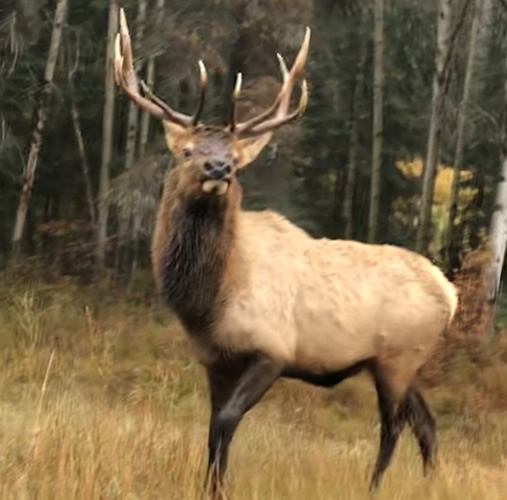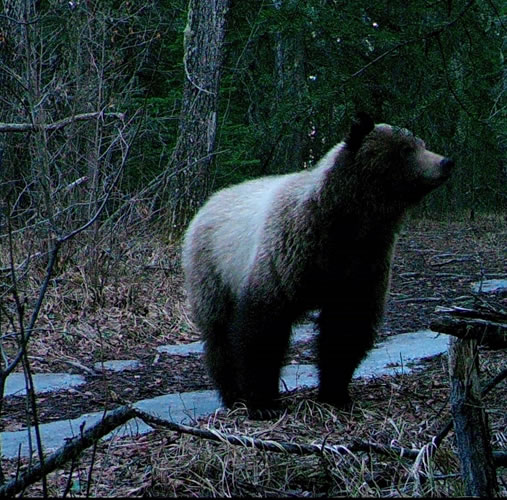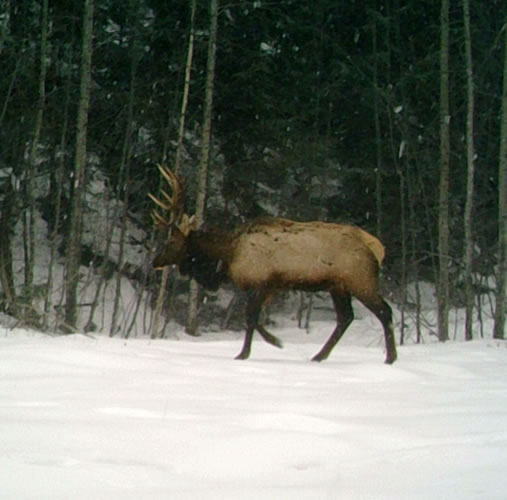Can Wildlife Data Lie?
Over the last decade, I have read several poorly written articles1 about wildlife encounters and attacks. Most contain little practical information. Many are clickbait2 designed to attract individuals on social media and legitimate mainstream media authors to write about them. These articles boost advertising revenue and get undeserved attention.

The worst example I have read lately was a SportingPedia Article3 that reported that Elk in Alberta are the most dangerous wildlife in Canada and thousands of times more likely to attack someone in Alberta than other wildlife. The author states when talking about Alberta “…close encounters with wildlife are not uncommon. The animal that is most likely to attack or approach you is the elk…”4 This is misleading and points to Elk as the most likely animal to endanger you, which is actually the Grizzly Bear. This is followed by the Black Bear.
Do not misunderstand; ungulates5, which in Canada include Bison, Moose, Elk, Caribou and Deer, are the second most likely category of wildlife to kill a person after bears6. Based on statistics of past fatal human-wildlife attacks in Canada, one person will be killed on average each decade in Canada by an ungulate. So ungulates are dangerous wildlife. So take training in Wildlife & Bear Awareness that includes learning animal behaviour if you spend time in the wilderness. Elk are below Bison7, which have killed people and Moose8 which attack more people in Canada.
So what data did they analyze? It was open-source data made available through the Parks Canada Agency Open Government Portal9. This was information on reported wildlife encounters in selected Canadian National Parks. The data collected was “Human-wildlife coexistence incidents”10, over the twelve years11, not a list of attacks but conflicts involving humans and wildlife.
Ontario vs. Alberta
So as any good sports enthusiast should before taking advice about betting on a game, I decided to check the quality of SportingPedia's statistical analysis to see if they are worthy. So compare Ontario's 38 wildlife incidents (13 Black Bear & 8 Rattlesnake) with Alberta's 3,726 wildlife incidents (431 Grizzly Bear, 243 Black Bear & 2,999 Elk). Alberta certainly seems to have a lot more than Ontario.

First, we will look more closely at the Ontario data. Of the thirteen Black Bear incidents in Ontario, none were a bear in contact with a person, so no attacks within a National Park. Black Bears did kill two people in Ontario during this period, just not in a National Park. Of the eight reported attacks by the severely threatened and little heard about Massasauga Rattlesnake12 five were humans getting bitten, three were pets getting bitten and one was an aggressive display by a rattler. Now Georgian Bay Islands National Park gets 35,00013 visitors each year. Bruce Peninsula National Park gets 450,00014 visitors each year for a total of approximately 485,00015 visitors. Now this breaks down to .4 attacks per year or a 1/1,212,500 chance of getting a Massasauga Rattlesnake to bite you if you visit one of those two national parks in summer when the snakes are active.
So actually a better chance than SportingPedia's 1/14,233,942 chance. But still a small chance. In reality, the Leafs have a better chance of making it to the Stanley Cup than you do of being bitten by a rattlesnake in Ontario. The other thing is that you have zero chance of either being bitten by a Rattlesnake or attacked by a Black Bear in the GTA16.
Now we look closer at Alberta's data. First, understand that the wildlife incidents reported were mostly minor interactions, as Parks Canada states in its defence17. They do not represent attacks but human-wildlife coexistence incidents that include problems between animals and humans, garbage, food, pets, residences, trailers, tents and vehicles. Many involve sports, i.e. cycling, running or running with dogs etc., that always attract more problems with wildlife due to their speed. Add to this that the tourist season overlaps the rut and mating season and ungulates do not hibernate as bears do, so they pose a year-round wildlife risk.
The reports deal with human-wildlife interactions, which means that Alberta’s two heavily visited mountain National Parks are essentially over-represented in this data due to Banff National Park's 4 million18 visitors each year19 and Jaspers National Park's 2 million20 visitors each year21. This means 72 million visitors or a 1/24,008 chance of a potentially dangerous Elk encounter.
Let us break apart these statistics and see what is included in the 2,999. First Bluff Charges in Jasper are 1,329 and in Banff are 231 for a total of 1,560. Next Physical or Aggressive Displays in Jasper are 339 and in Banff are 271 for a total of 610. That means of the 2,999 so-called encounters or attacks, 2,170 are Elk just trying to drive off annoying humans. That means over 72% of these so called attacks were perfectly normal Ungulate Aggressive Defense Postures meant to protect them from what they perceive as aggressive human actions. The Elk were telling us to back off or stay away.
How about the actual attacks with contact? Jasper has had 32 and Banff had 7 for a total of 39. This means 3.25 per year. Now divide that by the 6 million visitors they receive per year to find the chance of an Elk attack. It works out to a 1/1,846,153 chance. To be fair Jasper got more attacks and fewer visitors. So let us focus on the worst possible location. Jasper has 2 million visits per year and 2.6 attacks or a 1/769,230 chance. This is far less than the 1/1,144 chance of a person having an incident that SportingPedia claimed.
Consider the numerous problems caused by herds of wandering Elk that live around Banff and Jasper town sites. These are the same areas the majority of park visitors travel around freely. Many consider the Elk tame and are waiting to pose with them for close-up pictures. Surprisingly, there are no deaths and few injuries with these Elk.
I only found one Elk-caused hospitalization during this period. That was in Jasper in 2016 in an encounter between a female Elk and a human out running with her dog. Parks Canada sadly euthanized this Elk22. Having the only major incident in Jasper makes sense. They have the most Elk contact with humans. Some of the best grazing lands in the park are around the town site. Realistically these Elk are tolerant of humans and give plenty of warning that they are feeling defensive.
During this period, Grizzly Bears killed three people and Black Bears killed two people23 in Alberta. This means you have a better chance of being killed by either species of bear in Alberta than an Elk. In Alberta with two bear species, you also have a better chance of being killed by a bear than in Ontario.
The data missed that a Bison killed one human in Alberta. Indeed human-bison incidents have increased in numbers over the last few decades as their number and locations increased. Since this death did not occur in Banff or Jasper, like the Bear attacks they were left out.
Will the Elk Really Attack?
So yes, ungulates including Elk will be encountered in Alberta. The most common place to see Elk is in our Mountain National Parks24 and Kananaskis Country. Most herds will be seen near town sites that predators like Grizzly Bears and Cougars avoid. It also means that in Banff and Jasper National Parks, where most visitors do not truly understand wildlife behaviour or the dangers of wildlife a lot of Ungulate Aggressive Defensive Posturing will be seen. This means that Bluff Charges, Physical or Aggressive Displays and even a few Human Contacts will occur each year. Fortunately, these defensive measures rarely result in attacks and since they are mostly from Elk, they are seldom fatal.

The Edmonton Elks have a far better chance of winning the Grey Cup than you have of being attacked by an Elk in Alberta. Let us be realistic the chances of an Elk attack if you have any common sense or Wildlife Awareness Training will never be close to the 1/1,144 chance for Alberta. So what is the most important thing to remember? A sports betting portal got national attention and a lot of clicks from visitors. They most likely made more money from additional sports betting than I make each year teaching wildlife awareness.
Sadly the media did not discuss how to avoid dangerous human-wildlife interactions in our national parks, where our tourists25 often misunderstand the real dangers of wildlife encounters. As Canadians and our many tourists search for relevant wildlife safety information, they will find these articles and believe that Elk are more dangerous than Bears. So I am not laying down any bets through Sportingpedia since I must assume their sports betting advice is as well-researched as their reporting on wildlife attacks in Canada.
Article by Bruce Zawalsky (11th April 2023, Updated 2nd October 2023)
Chief Instructor of the Boreal Wilderness Institute
Additional Resources
- Online or Classroom Wildlife Awareness Training [Training Course]
- Using Bear Spray in Cold & Poor Weather [YouTube Video]
- Backpacking & Hiking Resources [Resource Page]
Footnotes
- I will address only one articles as it is better not to gain the others any more attention.
- Wikipedia article on Clickbait.
- What are the chances of being attacked by wildlife in each Canadian province, Paul Kemp, Feb 15, 2023, Sportingpedia.com
- Kemp in the section on Alberta.
- Ungulate are a hoofed herbivore quadruped mammal.
- Canadian Wilderness Survival, page 20 and pages 318-320.
- Bison gores Calgary man to death.
- Hunter airlifted to hospital after wounded moose fights back and Smithers moose attack on video.
- Parks Canada Open Government Portal.
- Human-wildlife coexistence incidents managed by Parks Canada.
- The data covers the period from 2010 through 2021.
- Massasauga rattlesnake or Sistrurus catenatus is a threatened species of venomous snake living in the Great Lakes region. Today found only a small area on the eastern side of Georgian Bay and the Bruce Peninsula.
- Parks Canada's data states only contact with a human. So I am assuming that these were all rattlesnake bites. On average two rattlesnake bites are reported each year in Ontario. Rattlesnake bites should be treated in a hospital, but are rarely fatal.
- https://www.statista.com/statistics/501588/visitors-to-georgian-bay-islands-national-park/
- https://www.statista.com/statistics/501581/visitors-to-bruce-peninsula-national-park/
- Greater Toronto Area, contains 6.7 million people and close to half of the population of Ontario. Other than Raccoons which are Synanthropes they have few wildlife problems. Neither Black Bears nor the Massasauga rattlesnake is found anywhere near the GTA.
- CTV Article, Parks Canada disputes wildlife attack information reported by SportingPedia.
- https://www.statista.com/statistics/501614/visitors-to-banff-national-park/
- Approximately 48 million during the 12 years of the study.
- https://www.statista.com/statistics/501626/visitors-of-jasper-national-park/
- Approximately 24 million during the 12 years of the study.
- Parks Canada says elk euthanized after knocking down woman near Jasper, Alta.
- In Alberta since 1900 15 people have been killed by Grizzly Bears and 9 have been killed by Black Bears. For more information see the Wikipedia article of the List of fatal bear attacks in North America.
- Banff National Park, Jasper National Park and Waterton Lakes National Park.
- Stay in your vehicle: Tourists still taking risks with Alberta wildlife.

